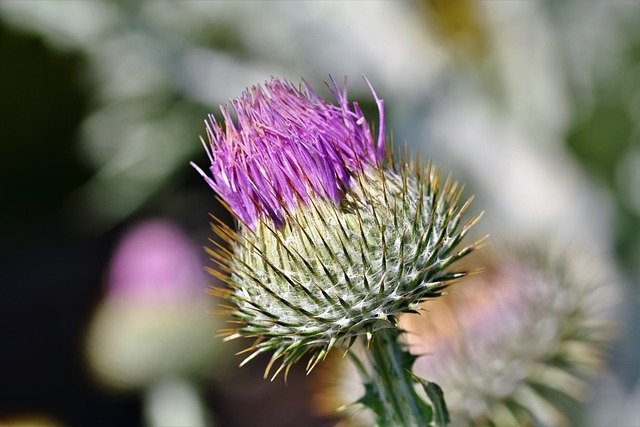
The Significance of the Thistle in Scottish Culture
You may be aware that the Scottish thistle is the official flower of Scotland. What might surprise you to know is that this recognizable plant flowers during the summer months and can reach a height of up to eight feet. Covered with sharp spines to protect it from draught and predators, its beauty shines through in its distinctive lavender color at the top.
Interestingly, the thistle has a long and powerful association with the Scottish people that has lasted through centuries. Read on to find out some more curious facts about the flower.
History and Thistle Intertwined
Silver coins in Scotland seem to prefer a thistle as its main adornment. Proof of this can be found in coins dating back to 1474 at a time when King James III was the ruler of Scotland. Centuries later in 1687, King James VII founded the Order of the Thistle, which he defined as the “greatest order of chivalry” to roam the land. Their emblem was the thistle and their translated motto went something like this: “No one provokes me with impunity” referencing the thistle that cannot be attacked without its assailants suffering while doing it.
Mary Queen of Scots incorporated the image of the thistle into the Great Seal of the country, forever sealing its image as the national symbol of unity and longevity.
In recent times, it’s easy to find images of the Scottish thistle embedded in logos as varied as those for the police department, the Scottish rugby team, and the national football team of Scotland, just to name the most salient of its uses.
How Did the Thistle Become the National Flower?

There are several theories as to why the thistle is Scotland’s national flower. The most widely accepted refers to the Battle of Largs, which took place in 1263 while Scotland was part of the Kingdom of Norway.
That year, King Alexander III offered to buy the Western Isles from Nordic King Haakon IV. In King Alexander’s plan to liberate the nation, he set sail with a fleet of longships towards the beach at Largs in Ayrshire.
Seeing him approach, the Norsemen tried to surprise him by carrying out a sneak attack. They believed that, by removing their shoes, their advance would not be heard by the incoming Scottish king and his clansmen. However, their plan failed as men kept stepping over the thistle and crying out in pain.
The Scottish troops were able to detect the presence of their enemy and the thistle has earned a well-deserved spot in Scottish history and lore ever since.
What Type of Thistle Appears on the Scottish Insignia?
Different varieties of thistle grow in Scotland. However, the one chosen by Sir Walter Scott to be used as an emblem when King George IV visited Scotland in 1822 was the species known as Onopordum acanthium, which is now known as the Scotch thistle




